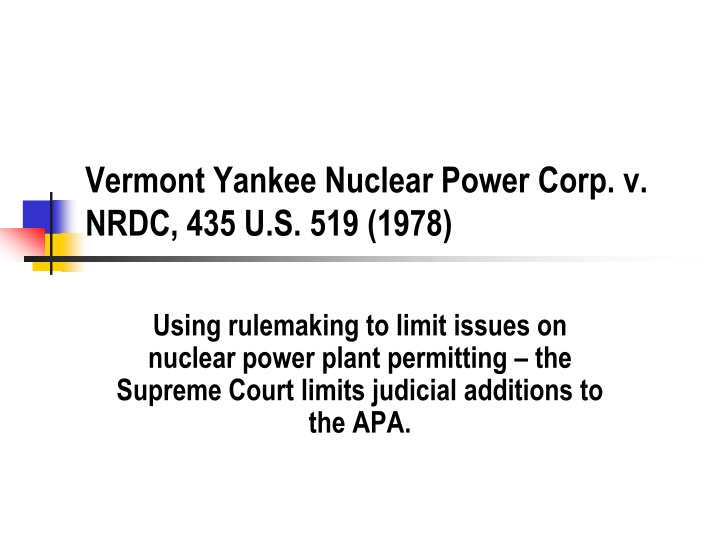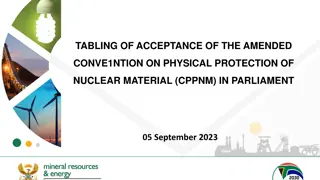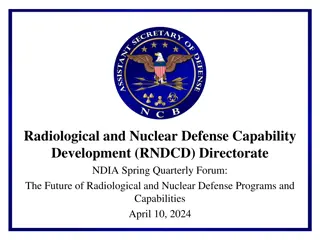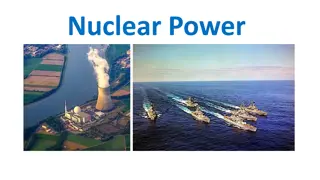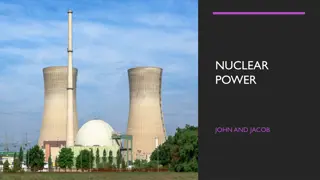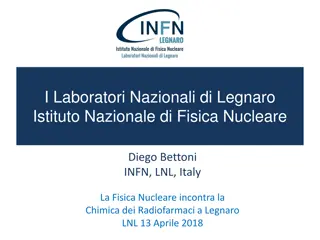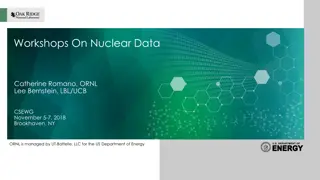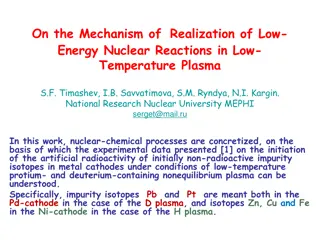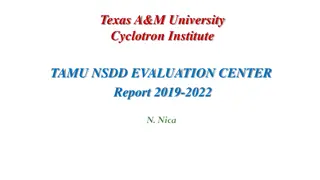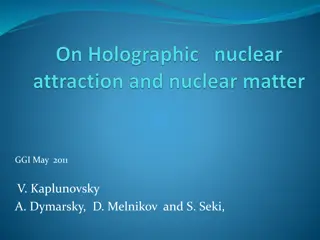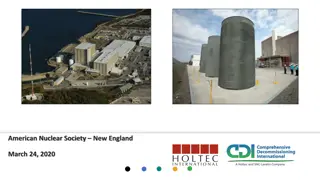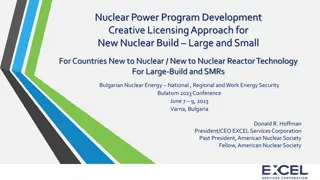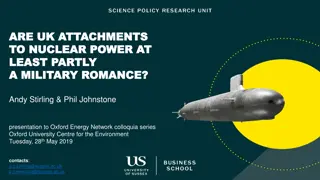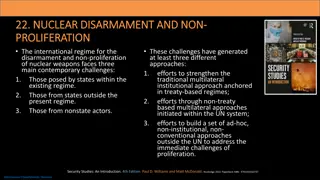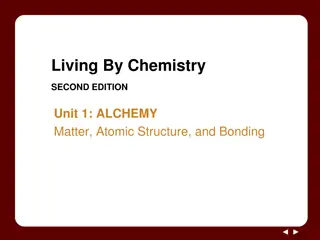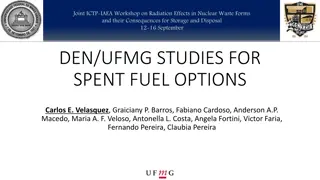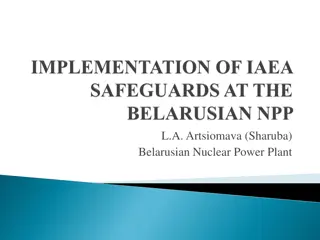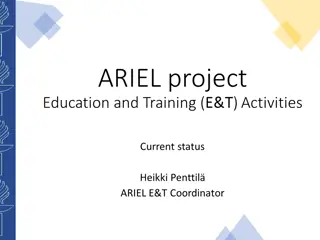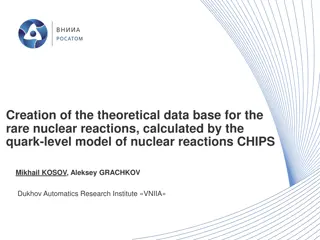Nuclear Power Plant Regulations Overview
This overview delves into Nuclear Power Plant Regulations, the Permit History for Vermont Yankee, NEPA of 1969, and the objectives of NEPA. It also explores the roles of Federal agencies, the Council on Environmental Quality, and the basic national charter for environmental protection.
Download Presentation

Please find below an Image/Link to download the presentation.
The content on the website is provided AS IS for your information and personal use only. It may not be sold, licensed, or shared on other websites without obtaining consent from the author.If you encounter any issues during the download, it is possible that the publisher has removed the file from their server.
You are allowed to download the files provided on this website for personal or commercial use, subject to the condition that they are used lawfully. All files are the property of their respective owners.
The content on the website is provided AS IS for your information and personal use only. It may not be sold, licensed, or shared on other websites without obtaining consent from the author.
E N D
Presentation Transcript
Vermont Yankee Nuclear Power Corp. v. NRDC, 435 U.S. 519 (1978) Using rulemaking to limit issues on nuclear power plant permitting the Supreme Court limits judicial additions to the APA.
Nuclear Power Plant Regulation Originally regulated by the Atomic Energy Commission Regulated and promoted nuclear power Regulation was split off to the Nuclear Regulatory Commission because of conflicts of interest 2
Nuclear Power Plant Permitting Permitting is an adjudication Specific party, specific facts There is a right to community participation In this period, the plant owner first received a construction permit, and then applied for an operating permits when the plant was built. Politically difficult to deny an operating permit. 3
The Permit History for Vermont Yankee In 1967, pre-NEPA, Vermont Yankee is granted a construction permit. In 1971, post-NEPA, Vermont Yankee applies for an operating permit. The National resources Defense Council opposes the operating permit by challenging the Environmental Impact State required by NEPA. 4
NEPA 1969 (Slides from DOE) The National Environmental Policy Act (NEPA) of 1969 is the basic national charter for protection of the environment. 5 NEPA
Overview NEPA was necessary to ensure that Federal agencies would consider environmental concerns when making decisions, because often the statutes that created the agencies did not include an environmental mandate. 6 NEPA
Overview NEPA: Established policy [Section 101(a)] Set goals [Section 101(b)] Provided the means for carrying out policy (Section 102) Established the Council on Environmental Quality (CEQ) (Section 202) 7 NEPA
Objectives The objectives of NEPA are to: Declare a national policy that will encourage productive and enjoyable harmony between man and the environment 8 NEPA
Title I Section 101 Section 101(a) declares NEPA s general policy: It is the continuing policy . . . to use all practicable means and measures . . . to create and maintain conditions under which man and nature can exist in productive harmony, and fulfill the social, economic, and other requirements of . . . Americans. 9 NEPA
Objectives Promote efforts that will prevent or eliminate damage to the environment and biosphere and stimulate the health and welfare of man Enrich the understanding of the ecological systems and natural resources important to the Nation 10 NEPA
Objectives How does NEPA accomplish these objectives? By ensuring considerations of environmental issues before conducting major Federal actions through the requirement of an environmental impact statement before federal permitting or funding of projects with a significant impact on the environment. 11 NEPA
The Environmental Impact Statement This is a detailed report that must include: The catalog of potential environmental impacts The economic and environmental cost of those impacts The economic and other benefits of the project Alternatives that have lower environmental impacts. NEPA allows citizen suits to challenge the completeness of the environmental impact statement. 12
NEPA Litigation Permitting, and/or funding, cannot go forward until the environmental impact statement is complete to the court satisfaction. NEPA litigation and additional studies to augment the environment impact statement can take years. The only requirement of NEPA is that the environmental impact statement be complete. It does not require that the project be changed, only that the risks be fully disclosed. 13
The EIS Issues in Vermont Yankee Nuclear waste disposal The key rulemaking issue Alternatives to building the plant The NRDC also attacked the EIS for failing to consider alternatives to building the plant. The major alternative was increased energy conservation. 14
Nuclear Waste and the EIS Why is nuclear waste disposal a big issue for NEPA? Did the NRC or the nuclear industry have a good solution in 1971? What would this mean about the completeness of the EIS? Strategically, why does the NRDC want the court to require the EIS to analyze the long term environmental impact of nuclear waste? 15
Avoiding the Issue What does the NRC do to avoid making this a subject of the adjudication process? Why does it want to eliminate the disposal of nuclear waste from the permitting process? How will making a rule on waste disposal remove it from the hearing process? Classic narrowing of adjudication issues by rulemaking. 16
The Rulemaking What additional process was provided beyond the usual APA notice and comment? Which alternative did the NRC adopt after the public comment? ..specified numerical values for the environmental impact of this part of the fuel cycle, which values would then be incorporated into a table, along with the other relevant factors, to determine the overall cost-benefit balance for each operating license. Why is the NRDC unhappy with this alternative? Removes the issue from the EIS because a disposal plan is not part of the permit. 17
DC Circuit What does the DC circuit want the NRC to do to improve the due process in their rulemaking? it likewise clearly thought it entirely appropriate to "scrutinize the record as a whole to insure that genuine opportunities to participate in a meaningful way were provided Did it specify exactly what procedures should have been used? 18
The Role of the APA Did the rulemaking comply with the APA? What is the lower court's theory about the APA requirements? Floor or ceiling? Who does the court think should decide on the appropriate procedures? Does this look like Goldberg or Matthews? 19
The Substantive Issue What is the DC court's real problem with the rulemaking on waste management? Did the NRC s rule solve the waste problem? Can an agency put off a problem by assuming that a solution will be found in the future? We are 40+ years latter - who was right about the waste disposal problem? (the real problem is that we can t decide whether we want to permanently dispose of the waste or reserve the possibility of recycling it in the future) 20
The United States Supreme Court What does the United States Supreme Court think about the role of the APA in setting process? Who gets to make the call - agency or courts? In the court's view, what is the real issue? "The fundamental policy questions appropriately resolved in Congress and in the state legislatures are not subject to reexamination in the federal courts under the guise of judicial review of agency action. Time may prove wrong the decision to develop nuclear energy, but it is Congress or the States within their appropriate agencies which must eventually make that judgment. Why is this critical for the political control of agencies? 21
